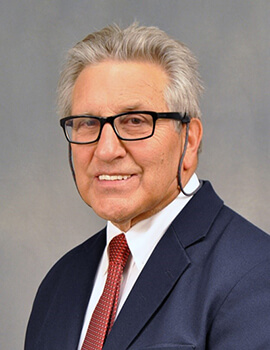Search results
Robotic Ablation of Arrhythmias
Author(s):
Prapa Kanagaratnam
Added:
3 years ago
Article
Author(s):
Lars H Lund
Added:
1 year ago
Prof Lars Lund (Karolinska Institute, SE) outlines the findings of the ALLEVIATE-HF-1 and ALLEVIATE-HF-2 studies at 6 months. Presented at Heart Failure 22, this study aimed to evaluate a no-implant shunt in patients with chronic heart failure.
Discussion Points:
1. Aims of This Study
2. No-Implant Interatrial Shunt
3. Inclusion and Exclusion Criteria, Patient Cohort and Study Design
4. Key…
View more
Author(s):
Sophie Mavrogeni
,
George Markousis-Mavrogenis
,
Genovefa Kolovou
Added:
3 years ago
Rheumatoid arthritis, the spondyloarthropathies, systemic lupus erythematosus, systemic vasculitides, inflammatory myopathies, systemic sclerosis and mixed connective tissue disease are autoimmune rheumatic diseases (ARDs) with high incidence of cardiovascular disease (CVD).1 CVD is usually underestimated in patients with rheumatic diseases, because the main focus of rheumatologists is the signs…
View more
Author(s):
Brage H Amundsen
,
Anders Thorstensen
,
Asbjørn Støylen
Added:
3 years ago
Cardiovascular imaging is a rapidly growing area, where technological development combined with clinicians’ demand for optimal visualisation of the heart might lead us to a situation where costs are high and evidence is sparse. Applying the correct imaging modality is thus an important task in clinical practice. The aim of this article is to discuss the present and future potential of deformation…
View more
The Evolution of Lead Extraction
Author(s):
Melanie Maytin
,
Laurence M Epstein
Added:
3 years ago
Article
Author(s):
Rick Geoffrion
Added:
3 years ago
Cardiovascular Disease
Cardiovascular disease associated with atherosclerosis is a condition mainly associated with a thickening of the artery wall and the eventual blockage of blood flow in an artery due to fatty deposits and plaque formation. When cardiovascular disease is brought to mind, the heart is what people think of most; however, although the heart is the predominant organ affected by…
View more
Mina Farag
Research Area(s) / Expertise:
Author
Expertise
Matthias Karck
Research Area(s) / Expertise:
Author
Expertise
Author(s):
Bruno Passaretti
,
Paolo Sganzerla
,
Elena Lucca
,
et al
Added:
3 years ago
The presence of electrical dyssynchrony (which following an electrocardiogram can be visualised as a left bundle branch block [LBBB]) is an indication for biventricular pacing if it is associated with systolic dysfunction (ejection fraction [EF] <35%) and dyspnoea in New York Heart Association (NYHA) class II–IV. In the great majority of patients, biventricular pacing determines a significant…
View more
Robert Eckel
Research Area(s) / Expertise:
Author












 « First
« First